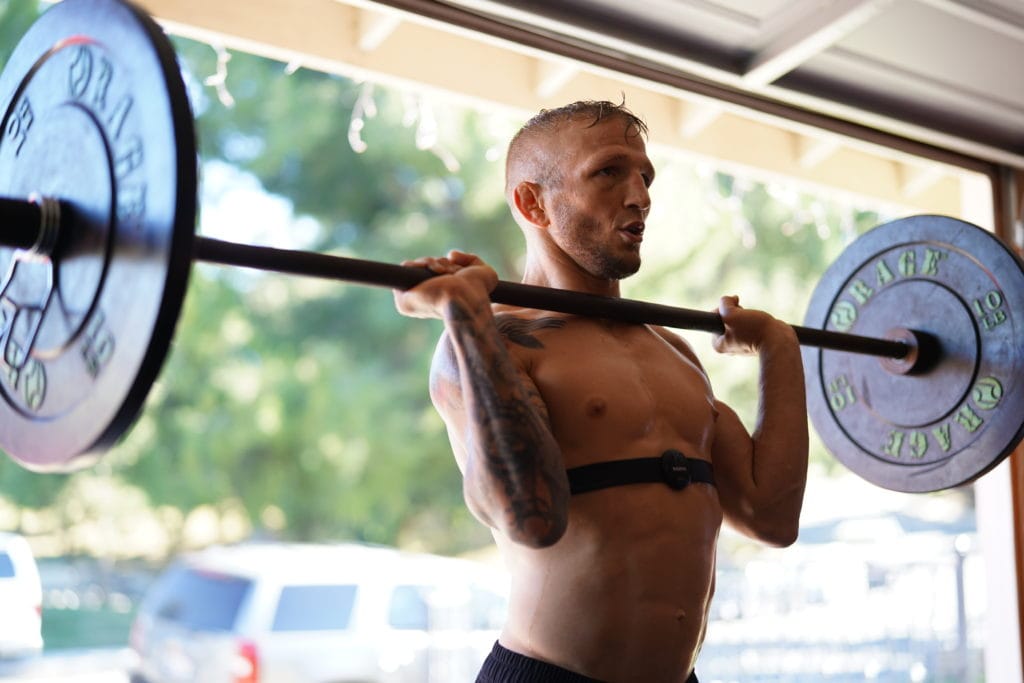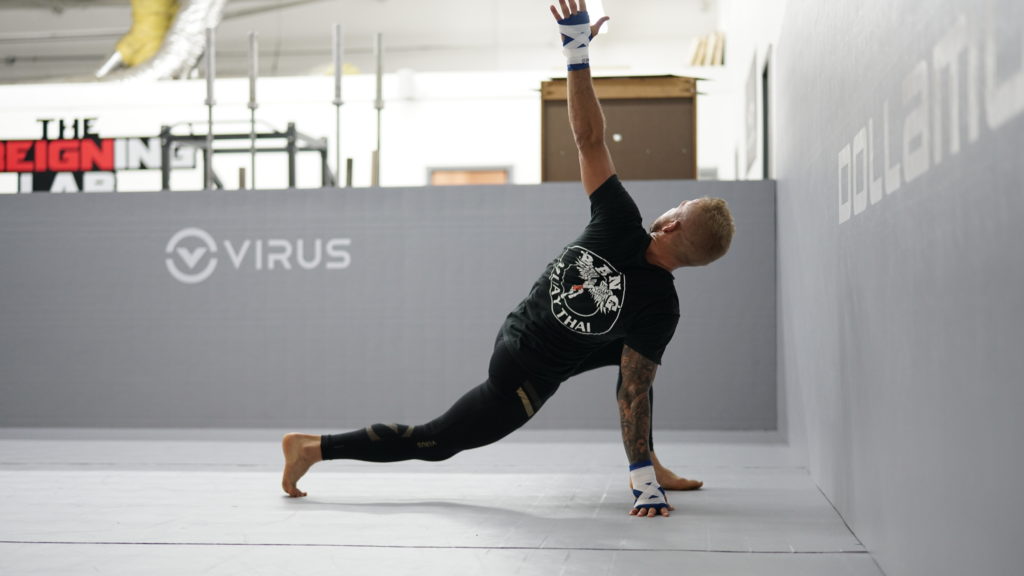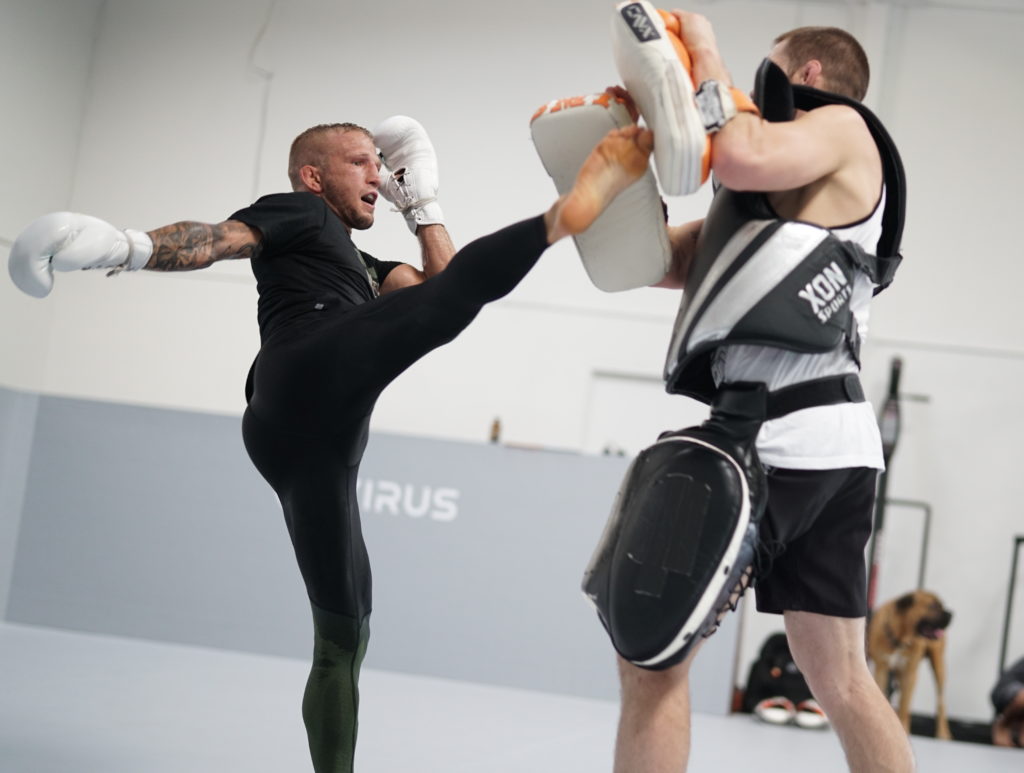Training for pure muscular strength has its perks. Obviously, you’ll be able to lift heavier dumbbells, squat more weight, and simply lift heavier objects in general.
However, standard weight training for physical strength is going to leave you less fit than you could be. This is because true fitness is functional and holistic, involving strong muscles that are also flexible and agile. Building big muscles is great, but if you can’t move them quickly through all ranges of motion, you may find that strength isn’t going to get you very far.
Enter functional training: the method that builds all aspects of fitness, and will actually improve your strength.
What is Functional Training?

To put it simply, functional training focuses on training “movements,” not muscles. This doesn’t mean that your muscles aren’t being worked in functional training, but simply that your body is being trained holistically to function as a strong, yet mobile and flexible unit.
For instance, functional training exercises focus on using several muscles groups at once, instead of isolating a single muscle like your biceps. Exercise like burpees, pushups, squats, rowing, climbing, and sprinting are all examples of functional movements.
These exercises develop functional strength, which is more than simply how much weight you can lift or press. Functional strength takes into account mobility, flexibility, coordination, and agility, as these each compliment one another to create a holistically “fit” body that is capable of more than just pushing weight in one plane of motion. Unlike traditional weight training, which attempts to just build muscle volume, functional training builds a strong foundation for your muscles to grow on by strengthening stabilizer muscles that support larger muscle movements. It also corrects any misalignments in your body before building upon them, which regular weight training has a hard time doing.
Because of this, incorporating functional training into your regime can actually increase your strength as a whole and help prevent injuries. They also keep you on top of your game in real-world situations where you have to move fast, or move something large and heavy.
Let’s dive into a few more benefits of functional training, and how you can incorporate it into your regime.
Benefits of Functional Training

1. Improves Mobility
Mobility is defined as the ability to move your joints through their full range of motion. When we talk about being “fit,” being mobile ranks just as high on the importance scale as being strong.
Functional movements focus on full-body, holistic movements that consistently move your joints through their full range. Think of it this way: when you do a static exercise, such as a chest press with a barbell, your joints move in one plane and direction: up and down. The same goes for static squats, and really anything involving workout machines.
When you do functional, full-body lifts or movements like kettlebell swings, cleans, burpees, etc … your joints are moving across more than one plane, and often move through full rotations. In doing this, you build strength around your joints (which helps support them) while simultaneously keeping then flexible.
This becomes extremely important when we also consider avoiding injuries, as being able to fully extend and rotate joints helps prevent them from being popped out of place. It can also improve your power output and lifts, as being able to fully extend and rotate can help you push and pull in ways you might not be able to if your joints were stiff.
2. Builds Real-World Strength
As we mentioned earlier, the entire basis of functional training is to mimic real-world movements to build holistic strength throughout your entire body. By doing this, you not only increase your fitness inside the gym, but also outside of the gym in real-life situations. Need to move heavy furniture without straining your back? Maybe lift up your kids, or even fend off an attacker? Functional movements increase the strength needed in these situations, whereas say, squatting a heavy barbell will make your legs strong, but won’t necessarily make you move more efficiently.
3. Improves Stability

Stability is a huge deal when it comes to being able to lift, and even simply move, efficiently.
You body has two types of muscles that help you perform any movement: primary movers and stabilizers. Primary movers are the “big” muscles that perform a movement. Think glutes or chest muscles. Stabilizer muscles, on the other hand, are smaller muscles that help support the primary movers while performing a movement.
You can compare this to a safety harness (of sorts) when doing a bungee jump, where your primary movers are you diving, and the bungee cord is your stabilizer muscles, supporting the jump so you don’t extend too far (and obviously hit the ground). In a more literal sense, the stabilizer muscles in your shoulder keep your shoulder muscles stable when you’re pushing or pulling heavy objects. The stronger your stabilizer muscles, the more secure and powerful your primary moves will be.
4. Prevents Injuries
One of the top benefits of functional training is its ability to help prevent injuries. Remember how those small stabilizer muscles work to stabilize your primary muscles during a movement? They also help stabilize your entire skeletal system. Specifically, the stabilizer muscles in your core, which consists of not only your abs, but a large wrap of muscles that include your entire lower back and obliques, help keep your spine in alignment during rotational movements. This ensures that your back doesn’t get thrown out or overextended.
However, you also have stabilizer muscles throughout your shoulders and hips, which help prevent the all-too-common pulled hams and shoulder tears.
5. Boosts Performance

Research shows that functional training can boost performance, even in people already considered physically fit. For example, a study on high school basketball players showed just 16 weeks of functional movement training improved hand grip strength by 12 percent and bench-press strength by 9 percent. [*] Another found that other athletes improved their jump height and distance in just 6 weeks. [*]
This occurs because functional training builds complementary fitness factors to strength, like agility and coordination, which help provide the foundation for power.
6. Build Real Strength

Any number of exercises like kettlebell swings, planks, deadlifts, lunges, cleans, and squats can be combined to create an efficient functional workout. Try to base most of your training around these full-body movements, inter-dispersing them with heavier lifts throughout the week.
If you’re looking for a pre-structured regime, you can check out my Fit to Fight course, which is based purely on functional movement (and don’t worry, you don’t need to be a professional athlete or fighter to reap the benefits). This course with take you step-by-step in ultra-HD video through workouts and techniques that build balance, stability, focus, dexterity, and improve your cardio, all in the comfort of your own space.
thanks a lot man, i play rugby(a contact sport) and your insight on functional training is very informational. I do not know why i have not tried functional training yet but i am now.
Great article. Thanks for sharing!